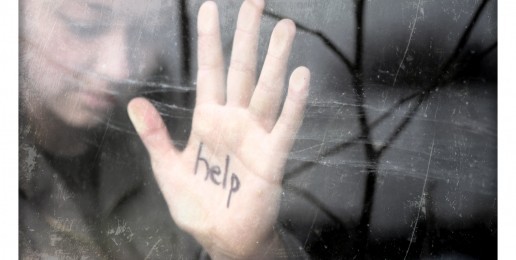
By Nicholas D. Kristof –NewYorkTimes.com
Jasmine Caldwell was 14 and selling sex on the streets when an opportunity arose to escape her pimp: an undercover policeman picked her up.
The cop could have rescued her from the pimp, who ran a string of 13 girls and took every cent they earned. If the cop had taken Jasmine to a shelter, she could have resumed her education and tried to put her life back in order.
Instead, the policeman showed her his handcuffs and threatened to send her to prison. Terrified, she cried and pleaded not to be jailed. Then, she said, he offered to release her in exchange for sex.
Afterward, the policeman returned her to the street. Then her pimp beat her up for failing to collect any money.
“That happens a lot,” said Jasmine, who is now 21. “The cops sometimes just want to blackmail you into having sex.”
I’ve often reported on sex trafficking in other countries, and that has made me curious about the situation here in the United States. Prostitution in America isn’t as brutal as it is in, say, India, Nepal, Pakistan, Cambodia and Malaysia (where young girls are routinely kidnapped, imprisoned and tortured by brothel owners, occasionally even killed). But the scene on American streets is still appalling – and it continues largely because neither the authorities nor society as a whole show much interest in 14-year-old girls pimped on the streets.
Americans tend to think of forced prostitution as the plight of Mexican or Asian women trafficked into the United States and locked up in brothels. Such trafficking is indeed a problem, but the far greater scandal and the worst violence involves American teenage girls.
If a middle-class white girl goes missing, radio stations broadcast amber alerts, and cable TV fills the air with “missing beauty” updates. But 13-year-old black or Latina girls from poor neighborhoods vanish all the time, and the pimps are among the few people who show any interest.
These domestic girls are often runaways or those called “throwaways” by social workers: teenagers who fight with their parents and are then kicked out of the home. These girls tend to be much younger than the women trafficked from abroad and, as best I can tell, are more likely to be controlled by force.
Pimps are not the business partners they purport to be. They typically take every penny the girls earn. They work the girls seven nights a week. They sometimes tattoo their girls the way ranchers brand their cattle, and they back up their business model with fists and threats.
“If you don’t earn enough money, you get beat,” said Jasmine, an African-American who has turned her life around with the help of Covenant House, an organization that works with children on the street. “If you say something you’re not supposed to, you get beat. If you stay too long with a customer, you get beat. And if you try to leave the pimp, you get beat.”
The business model of pimping is remarkably similar whether in Atlanta or Calcutta: take vulnerable, disposable girls whom nobody cares about, use a mix of “friendship,” humiliation, beatings, narcotics and threats to break the girls and induce 100 percent compliance, and then rent out their body parts.
It’s not solely violence that keeps the girls working for their pimps. Jasmine fled an abusive home at age 13, and she said she – like most girls – stayed with the pimp mostly because of his emotional manipulation. “I thought he loved me, so I wanted to be around him,” she said.
That’s common. Girls who are starved of self-esteem finally meet a man who showers them with gifts, drugs and dollops of affection. That, and a lack of alternatives, keeps them working for him – and if that isn’t enough, he shoves a gun in the girl’s mouth and threatens to kill her.
Solutions are complicated and involve broader efforts to overcome urban poverty, including improving schools and attempting to shore up the family structure. But a first step is to stop treating these teenagers as criminals and focusing instead on arresting the pimps and the customers – and the corrupt cops.
“The problem isn’t the girls in the streets; it’s the men in the pews,” notes Stephanie Davis, who has worked with Mayor Shirley Franklin to help coordinate a campaign to get teenage prostitutes off the streets.
Two amiable teenage prostitutes, working without a pimp for the “fast money,” told me that there will always be women and girls selling sex voluntarily. They’re probably right. But we can significantly reduce the number of 14-year-old girls who are terrorized by pimps and raped by many men seven nights a week. That’s doable, if it’s a national priority, if we’re willing to create the equivalent of a nationwide amber alert.






















